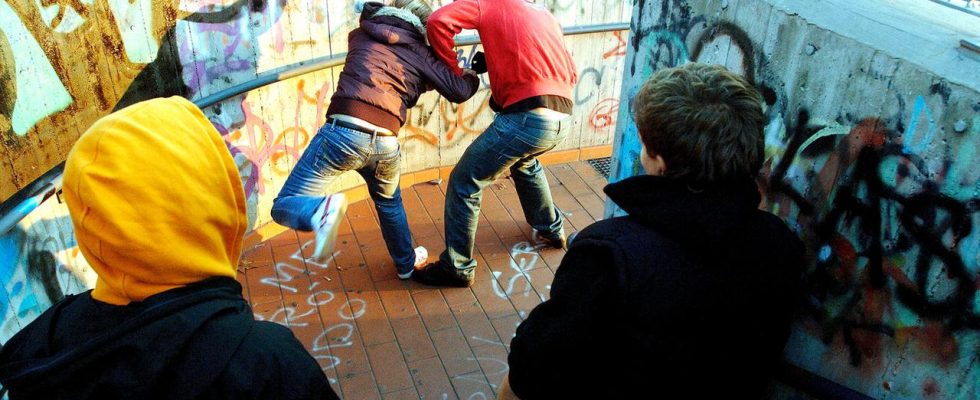Children and young people are more likely to be suspects than in the previous year: This is a result of police crime statistics. A project in North Rhine-Westphalia is trying to take countermeasures – and quite successfully.
He can’t make an angel out of every child, says social worker Markus Witalinski. But it always seems to work to get the young people on the right track. Accordingly, the preventative project for which Vitalinski works in Duisburg is called “Getting a Curve.”
Anyone who comes to his office has usually already done a lot. There are usually several reports that suggest that a career as an intensive care offender could begin here. “This can very well be triggered by a threat, insult, damage to property or graffiti,” says Witalinski about his order situation. “But it also goes on to include bodily harm offenses, extortionate offenses, extortionate robbery. The spectrum is quite broad.”
Average age for first-time offenders, 13 years
This starts in childhood. On average the children are 13 years old. Community service, arrest, youth prison – that would usually be the path marked out. Vitalinski wants to prevent that. He regularly visits affected families in Duisburg. To do this, he goes to every district.
His “customers” are diverse: poor, rich, uneducated, near-educated, with or without a migration background. “I can’t really think of anything that will blow me away,” said the educator. “That means I’m unbiased and go into households. We’re greeted warmly and friendly. It’s a measure that exists on a voluntary basis.”
“Get a curve” is a crime prevention initiative run by the North Rhine-Westphalia Ministry of the Interior. As soon as a child commits a crime for the first time, the police and social workers go to the family and offer help. The police, youth welfare services and guardians should pull together here.
“It’s getting more and more brutal”
Hüseyin Cansay has been working as an educational director at the Seeberger-Treff children’s and youth center in Cologne-Chorweiler for 38 years. Smaller crimes such as theft are almost commonplace here – but often violence is also involved.
Things are becoming more and more brutal, he observes. “In the meantime, it is certainly the case that the inhibition threshold to use violence has really been reduced, without prior notice, without anything. Then people strike directly and then violence is certainly carried out in groups,” said Cansay.
immigration and Educational disadvantages
The reasons are varied: Researchers say that the use of violence is now more accepted among young people and that glorification of violence is more widespread. According to police crime statistics, the number of young suspects without a German passport is also increasing.
Criminologists explain this with more immigration in recent years. In addition, the initial conditions, for example in refugee accommodation, are more difficult. “They often have fewer economic resources. First of all, they have educational disadvantages. All of these are circumstances that make it somewhat more likely that people will be involved in crimes,” says Christian Walburg, criminologist at the University of Münster.
Success rate at 80 percent
“Detect early, react correctly and help in the right way, work individually and prevent sustainably,” is written in bold letters on the website of the “Get the Curve” project. According to the company, over 1,000 young people and their families have already been helped. “We have a fairly low dropout rate and a very high graduate rate,” says social worker Vitalinsiki. “Graduation quota means that the participants who have finished ‘getting the curve’ after a good two to three years no longer commit any further crimes and do not become intensive offenders.”
But all of this takes time: you have to assume at least two years. But then some criminal careers are lost forever. 80 percent of young offenders would get a break.

